Harnessing the Therapeutic Benefits of Swimming in Addiction Recovery
Addiction recovery is a complex process that encompasses physical, mental, emotional, and social dimensions. Incorporating swimming into recovery routines taps into the multifaceted benefits of water-based exercise, offering a holistic approach to healing. This activity not only enhances physical health but also supports emotional stability and social connection, making it a valuable tool in fostering sustainable sobriety.
Physical Health Benefits of Swimming in Recovery
What are the benefits of swimming for physical health during addiction recovery?
Swimming is highly beneficial for physical health, especially for individuals in recovery from substance abuse. It offers a versatile, low-impact exercise that trains the whole body.
One of the primary advantages is its ability to improve cardiovascular health. Regular swimming strengthens heart muscles, enhances blood circulation, and helps in lowering blood pressure. These effects collectively reduce the risk of heart disease and stroke, which are common concerns during recovery.
In addition to cardiovascular benefits, swimming is excellent for developing muscle strength and endurance. The water's resistance challenges muscles, promoting increased flexibility and muscular endurance over time.
The buoyancy of water reduces impact on joints and bones, making walking or running difficult or painful for some recovering individuals. Swimming's gentle, joint-friendly nature supports injury recovery and helps manage chronic conditions, including arthritis.
Weight management is another significant benefit. Swimming burns calories effectively, aiding in body fat reduction and helping individuals maintain a healthy weight. This is often vital in recovery, as physical health and body image can influence mental health.
Furthermore, engaging regularly in swimming supports overall physical resilience. It can help repair damage caused by previous substance use and improve lung and heart function—especially beneficial for those with lung damage from smoking.
Participating in swimming activities can also foster social support and community engagement. Joining a swim club or group provides motivation, encouragement, and shared goals—all factors that reinforce positive habits.
Here’s a summary of the physical benefits discussed:
| Benefit | Description | Impact on Recovery |
|---|---|---|
| Cardiovascular health | Strengthens heart, improves circulation | Reduces risk of cardiovascular diseases |
| Muscle strength and endurance | Resistance training through water | Supports physical resilience |
| Joint-friendly exercise | Buoyancy minimizes impact | Aids injury recovery and chronic condition management |
| Weight management | Calorie burning in water | Helps maintain healthy body composition |
| Lung and heart health | Improved breathing and circulation | Boosts overall vital functions |
Including swimming as part of a recovery program offers a comprehensive approach to healing, improving both physical and mental health while fostering social connections that support long-term sobriety.
Mental Wellness and Cognitive Enhancement through Swimming
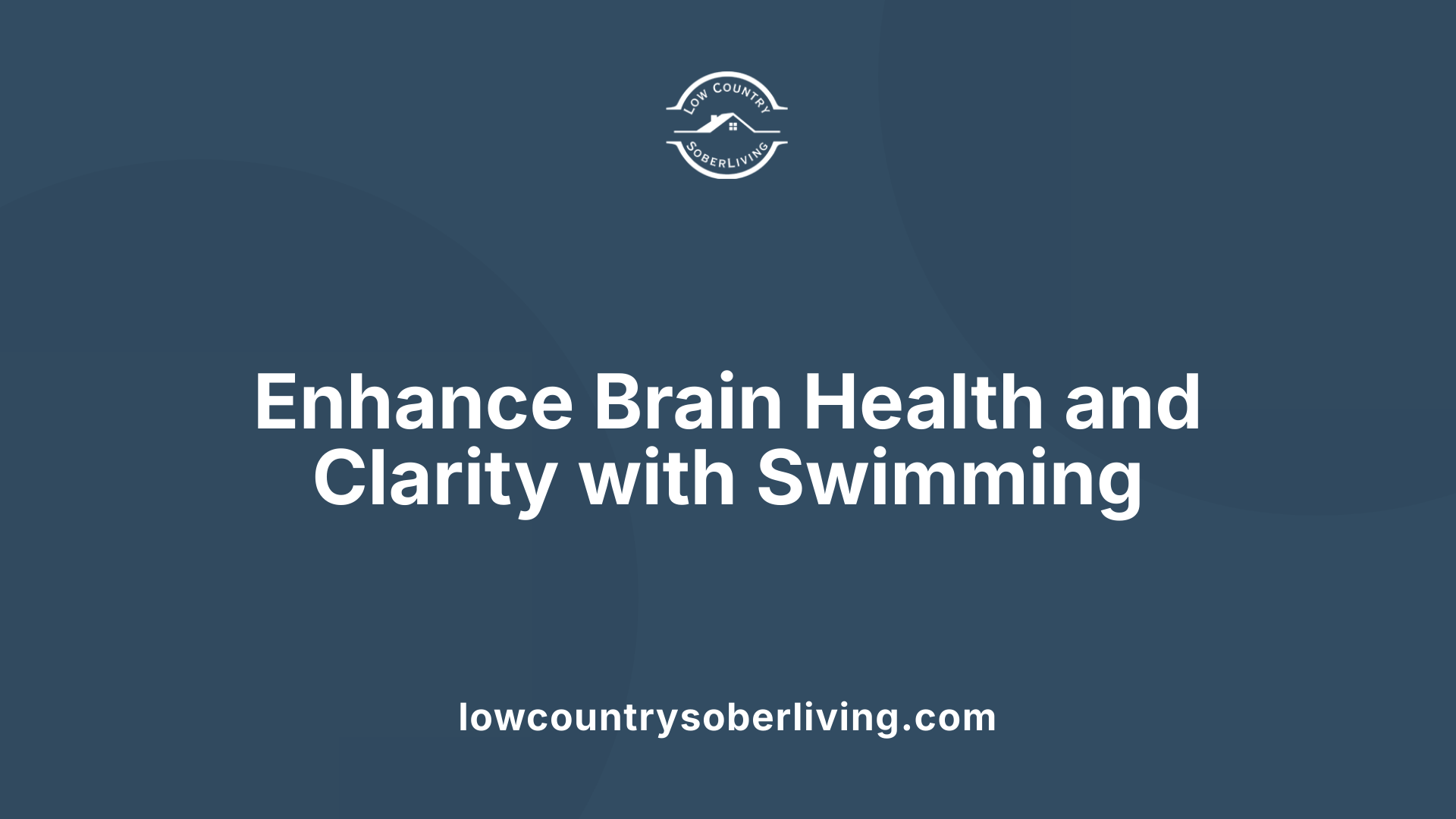
What mental health advantages does swimming offer during recovery?
Swimming provides a wide range of mental health benefits, especially crucial during recovery from substance abuse or injury. One of the primary advantages is the release of endorphins—natural chemicals in the brain that help improve mood and reduce feelings of stress, anxiety, and depression. These mood-boosting effects can be particularly valuable when individuals are navigating the emotional challenges of recovery.
The calming nature of water also plays a significant role in mental health. Immersion in water and focusing on swimming techniques promote relaxation and mindfulness, helping to distract from cravings or negative thoughts. This meditative aspect of swimming can lower stress levels and foster a sense of inner peace.
Additionally, swimming enhances sleep quality, which is often disturbed during recovery. Better sleep supports emotional stability and cognitive functioning, making it easier to manage recovery-related stress.
Research has shown that participating in swimming supports brain health by stimulating neurogenesis—the growth of new neurons in the brain. This process can improve cognitive functions such as memory, attention, and problem-solving, which are vital during recovery. The rhythmic and repetitive movements involved in swimming are also linked to meditative states, fostering mindfulness and emotional resilience.
Social engagement through swim clubs or group classes can build a supportive community, helping individuals feel less isolated and more confident in their recovery journey. Achieving swimming milestones boosts self-esteem, fostering a sense of achievement and empowerment.
In summary, swimming acts as a holistic approach to mental wellness by promoting mood enhancement, stress relief, improved sleep, brain health, and mindfulness. This combination supports emotional stability, cognitive resilience, and overall psychological well-being during recovery.
Emotional Stability and Self-Esteem Enhancement
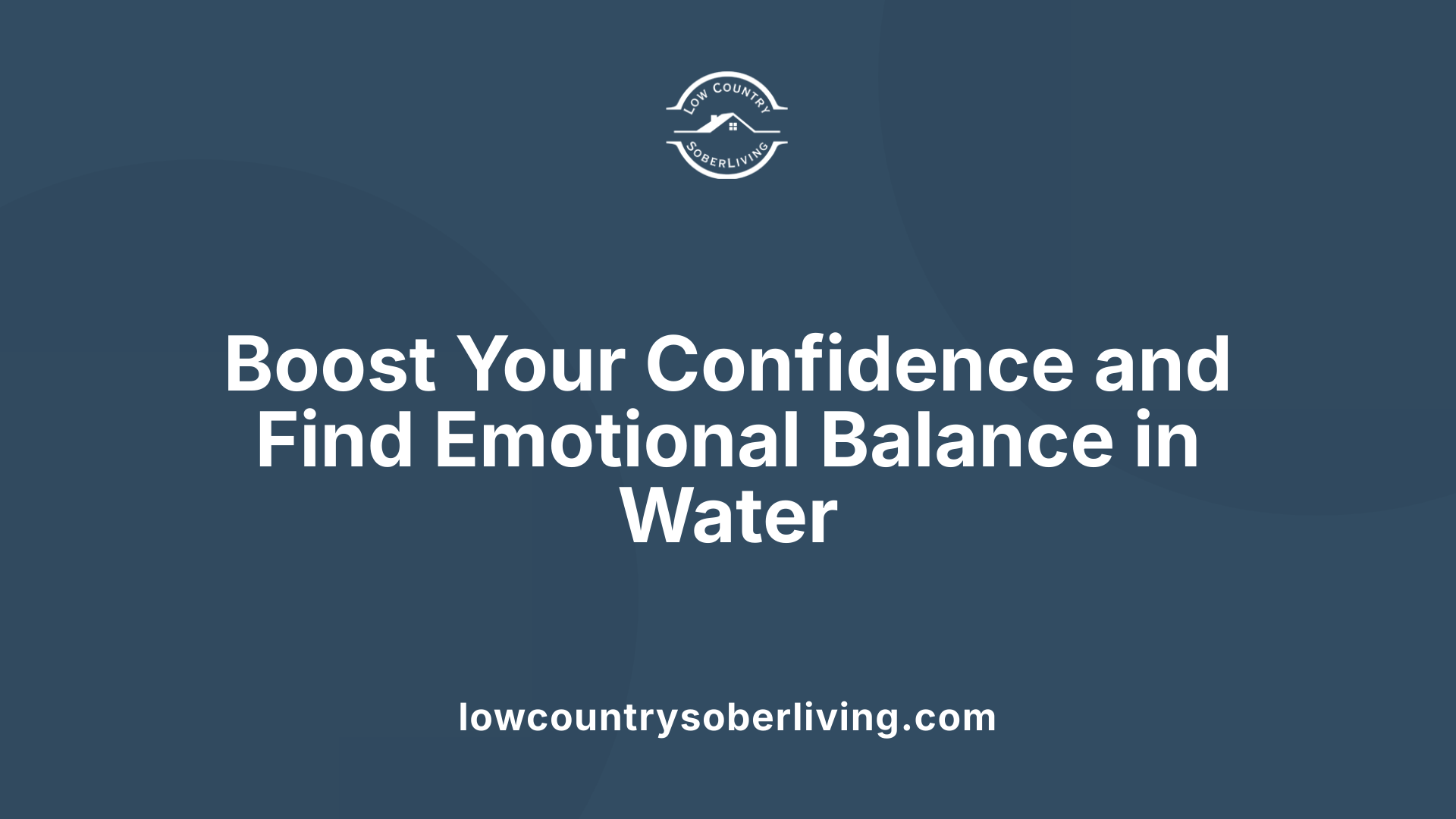
How does swimming contribute emotionally to addiction recovery?
Swimming plays a significant role in emotional recovery by releasing endorphins, the body's natural mood enhancers. These chemicals help elevate feelings of happiness and reduce stress, anxiety, and depression, which are common challenges during addiction recovery.
The rhythmic, flowing movements involved in swimming and the calming effect of water aid in soothing the nervous system. This relaxation fosters mental clarity and assists in managing emotional fluctuations. When swimming is performed outdoors or in natural settings, the mental health benefits are further amplified, helping individuals feel more connected and at peace.
Group swimming activities also foster social support by encouraging interactions and shared experiences. This sense of community can boost self-esteem and reduce feelings of isolation often experienced during recovery.
Overall, the combination of physical exertion, meditative qualities of water, and social engagement make swimming a powerful tool for enhancing emotional stability. It helps individuals develop resilience and a positive mood, supporting their journey toward lasting recovery.
What role does mood regulation and emotional balance play in overall recovery?
Maintaining emotional balance is crucial in addiction recovery, as it helps prevent relapse triggered by stress or emotional upheaval. Swimming's ability to regulate mood and promote emotional calmness makes it an excellent activity for establishing stability.
How do endorphins elevate mood during swimming?
Endorphins are naturally released during exercise, including swimming. They bind to receptor sites in the brain, producing feelings of happiness and pain relief. This chemical boost can alleviate mild to moderate depression symptoms and foster a sense of well-being.
How does swimming help reduce stress and calm the nervous system?
Water's buoyancy and soothing sounds promote relaxation by engaging the parasympathetic nervous system. Rhythmic breathing and movement help lower cortisol levels, reducing overall stress. This calm state can help individuals better cope with emotional challenges.
In what ways does skill development in swimming boost self-confidence?
Learning new swimming techniques and achieving personal goals reinforce a sense of accomplishment. As confidence grows, individuals tend to feel more capable and positive about their recovery journey.
How does swimming contribute to feelings of happiness and fulfillment?
The physical and psychological benefits of swimming—such as improved mood, social interaction, mastery of skills, and relaxation—combine to enhance overall happiness. These positive feelings support ongoing motivation and emotional health during addiction recovery.
Social Connectivity and Support Networks in Water
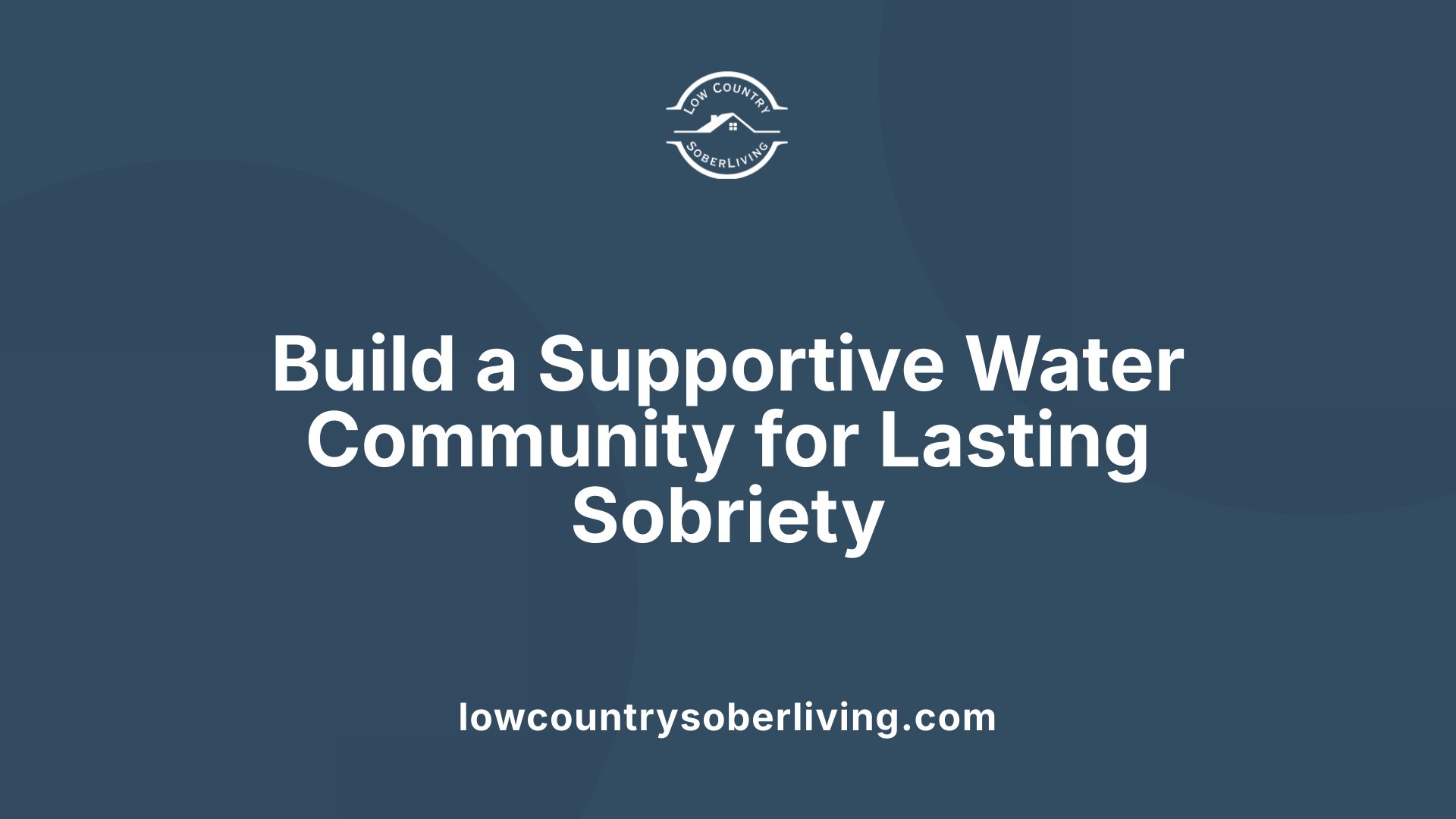
Building community through swimming clubs and groups
Participating in swimming activities within clubs or groups fosters a strong sense of community. These groups provide a structured environment where individuals recovering from addiction can connect with others facing similar challenges. Engaging in regular sessions helps create routines, which are vital in maintaining recovery efforts. The shared experience of learning new skills and achieving milestones promotes camaraderie and trust among members.
Fostering support, encouragement, and shared experience
Swimming groups create opportunities for peer support, offering encouragement during difficult days. Sharing progress and setbacks helps build resilience and resilience in a safe, understanding environment. Support from fellow swimmers can motivate individuals to stay committed to their recovery journey, reinforcing positive lifestyle changes.
Improving social skills and teamwork
Participating in group swimming enhances communication and cooperation, essential social skills. Group activities often involve teamwork, such as synchronized swimming or relay races, which emphasize collaboration. These experiences help individuals rebuild confidence in social settings, making it easier to reconnect with family and friends.
Creating a sense of belonging and emotional support
Being part of a swimming community offers emotional stability and a feeling of belonging. This collective environment reduces feelings of loneliness and isolation often associated with addiction. As individuals engage regularly, they develop supportive relationships that serve as emotional anchors during recovery.
Enhancing motivation for recovery
Ongoing involvement in swimming routines and community challenges boosts motivation. The shared accountability to the group encourages consistency in exercise and participation. Achievements earned through swimming can significantly boost self-esteem and reinforce commitment to embracing a healthier, substance-free lifestyle.
| Benefit | Description | Additional Notes |
|---|---|---|
| Community Support | Fosters bonds and shared purpose | Enhances emotional well-being |
| Skill Development | Improves communication and teamwork | Builds confidence |
| Emotional Support | Provides belonging and acceptance | Helps reduce relapse risk |
| Motivation | Encourages routine and perseverance | Strengthens recovery commitment |
Swimming as a Therapeutic Modality in Recovery
What role does swimming play as a therapeutic activity in recovery?
Swimming serves as a highly beneficial activity during recovery by combining physical, mental, and social benefits. Its low-impact nature makes it ideal for physical rehabilitation, especially for those recovering from injuries or managing chronic conditions. The buoyancy of water reduces stress on joints and muscles, allowing individuals to rebuild strength and endurance safely. Regular swimming can enhance cardiovascular health, improve flexibility, and support weight management, all important aspects of physical recovery.
Beyond physical benefits, swimming plays a vital role in promoting mental wellness. The calming properties of water and rhythmic movements help reduce stress, anxiety, and depression. Immersing oneself in water and focusing on swim techniques can induce meditative states, contributing to mindfulness and emotional stability. Endorphin release during exercise also boosts mood and self-esteem.
Socially, participating in swimming groups or aquatic therapy offers opportunities for community support. These groups foster a sense of belonging, encouragement, and shared experience, which are crucial for emotional recovery. Structured programs with healthcare professionals ensure safe practice and tailored routines, addressing individual needs.
Swimming can be adapted to various populations, including those with physical limitations. Its gentle resistance and supportive environment make it accessible for individuals with mobility issues or injuries. This adaptability encourages ongoing participation, helping to sustain recovery efforts.
Integrating swimming into comprehensive addiction and recovery programs benefits individuals holistically. The activity supports physical healing, relieves psychological stress, and strengthens social bonds, creating a multifaceted approach to overcoming challenges and maintaining long-term health.
Supporting Holistic Recovery with Water-Based Exercise
How can swimming support holistic recovery efforts?
Swimming plays a vital role in holistic recovery by combining physical, mental, social, and even spiritual benefits. It is a low-impact exercise that provides an excellent cardiovascular workout, strengthening the heart and improving blood circulation. It also helps develop muscle strength, flexibility, and endurance through resistance training in water.
Physically, swimming is gentle on joints due to water’s buoyancy, making it ideal for injury recovery and managing chronic conditions. This facilitates gradual rebuilding of stamina and strength without excessive strain.
Mental health benefits are equally significant. Engaging in swimming can reduce stress, anxiety, and depression. The rhythmic movements and calming properties of water foster relaxation, while endorphin release enhances mood. Many find swimming to be a meditative activity, promoting mindfulness and inner peace.
Socially, swimming encourages group participation through classes or clubs, fostering a sense of community. Supportive interactions can boost confidence, improve social skills, and motivate continued participation.
Spiritual and mindfulness aspects are also prominent. Immersing oneself in water and focusing on technique allows for a meditative state that nurtures inner peace, resilience, and discipline—traits essential in recovery journeys.
Furthermore, swimming complements traditional therapies by offering a holistic approach that addresses mind and body simultaneously. It helps reduce stress, aids sleep, and promotes emotional stability, making it a comprehensive method for advancing recovery.
By integrating exercise with mental and social benefits, swimming provides a balanced pathway to healing. Its capacity to rebuild physical health while supporting emotional well-being makes it highly effective for individuals on recovery paths from various addictions or injuries.
| Benefits | Focus Area | Description |
|---|---|---|
| Cardiovascular health | Physical | Strengthening heart muscles and improving blood flow |
| Muscle strength | Physical | Engaging all major muscle groups with water resistance |
| Flexibility | Physical | Increasing joint mobility through water support |
| Stress relief | Mental & Emotional | Relaxing, meditative environment reduces mental tension |
| Mood enhancement | Mental & Emotional | Endorphin release uplifts spirits |
| Confidence boost | Social & Emotional | Skill development and achievement increase self-esteem |
| Social interaction | Social | Encourages community, teamwork, and shared goals |
| Mindfulness | Spiritual & Meditative | Focused attention fosters inner calm |
| Support during rehab | Holistic | Gently supports recovery, injury healing, and chronic pain management |
Advantages of Swimming in Addiction Recovery Programs
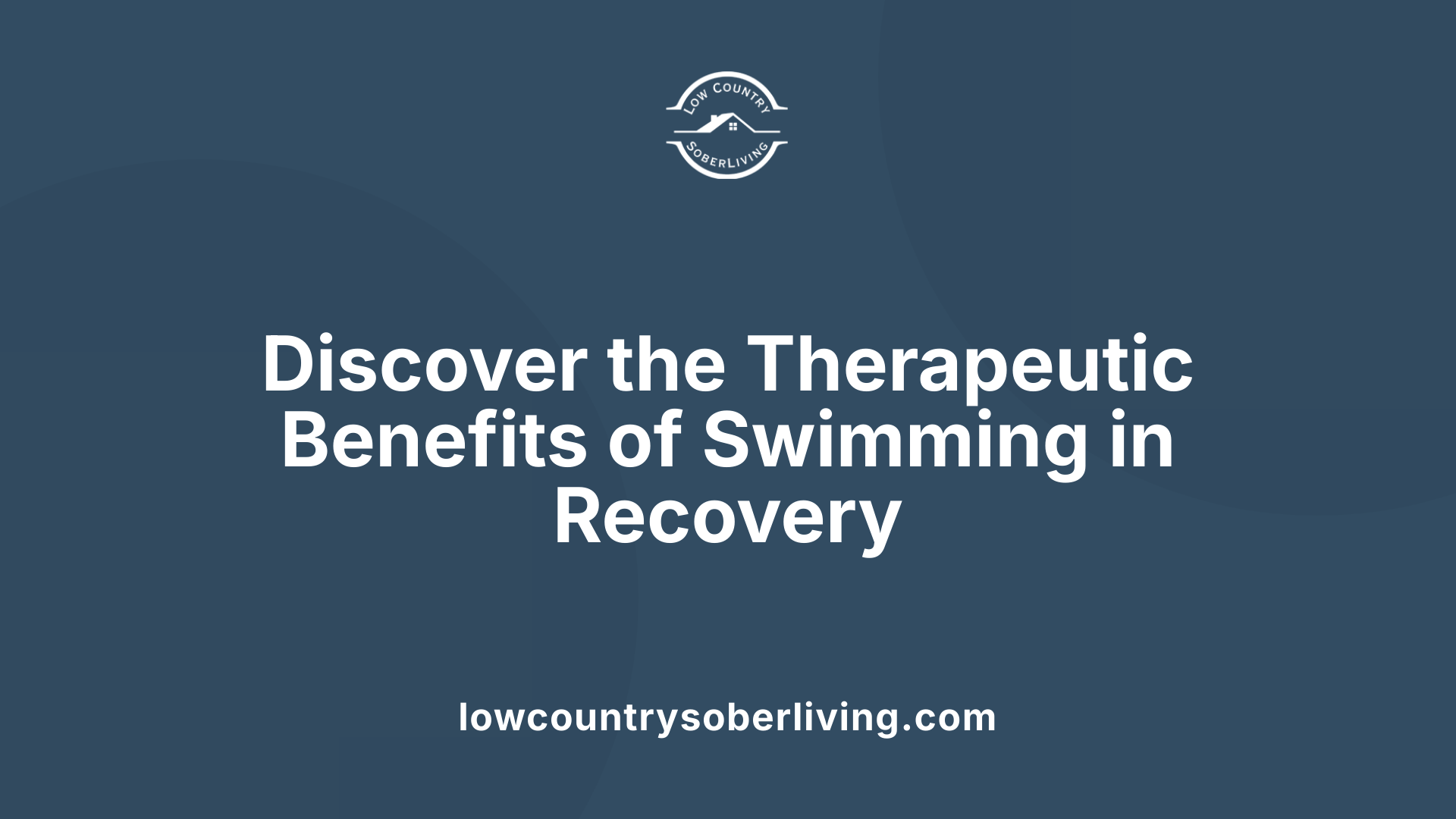
Why is swimming considered advantageous in addiction recovery programs?
Swimming offers a comprehensive set of benefits that make it particularly valuable for individuals in addiction recovery. As a low-impact, full-body exercise, swimming helps rebuild strength, endurance, and cardiovascular health without putting stress on joints or muscles. This is especially important for those who may have experienced physical deterioration due to substance abuse.
The rhythmic and meditative qualities of swimming help foster mindfulness and relaxation. When immersed in water, individuals often find a calming environment that reduces stress, anxiety, and depressive symptoms—common challenges in recovery. The activity stimulates the release of endorphins, natural mood lifters, which can improve emotional stability and self-esteem.
Incorporating swimming into recovery routines encourages discipline and consistency. Learning new skills, setting goals, and gradually improving in the water promote resilience and a sense of achievement. These structured routines can reinforce positive habits essential for maintaining sobriety.
Socially, swimming promotes community engagement. Joining swim clubs or support groups creates opportunities for connection, encouragement, and sharing experiences. Such social interactions foster a sense of belonging, which is critical during recovery.
Overall, swimming addresses physical, mental, and emotional dimensions of recovery. Its unique blend of exercise, mindfulness, and social support makes it an effective therapeutic tool for promoting long-term sobriety and overall well-being.
Promoting Sobriety and Psychological Well-Being through Swimming
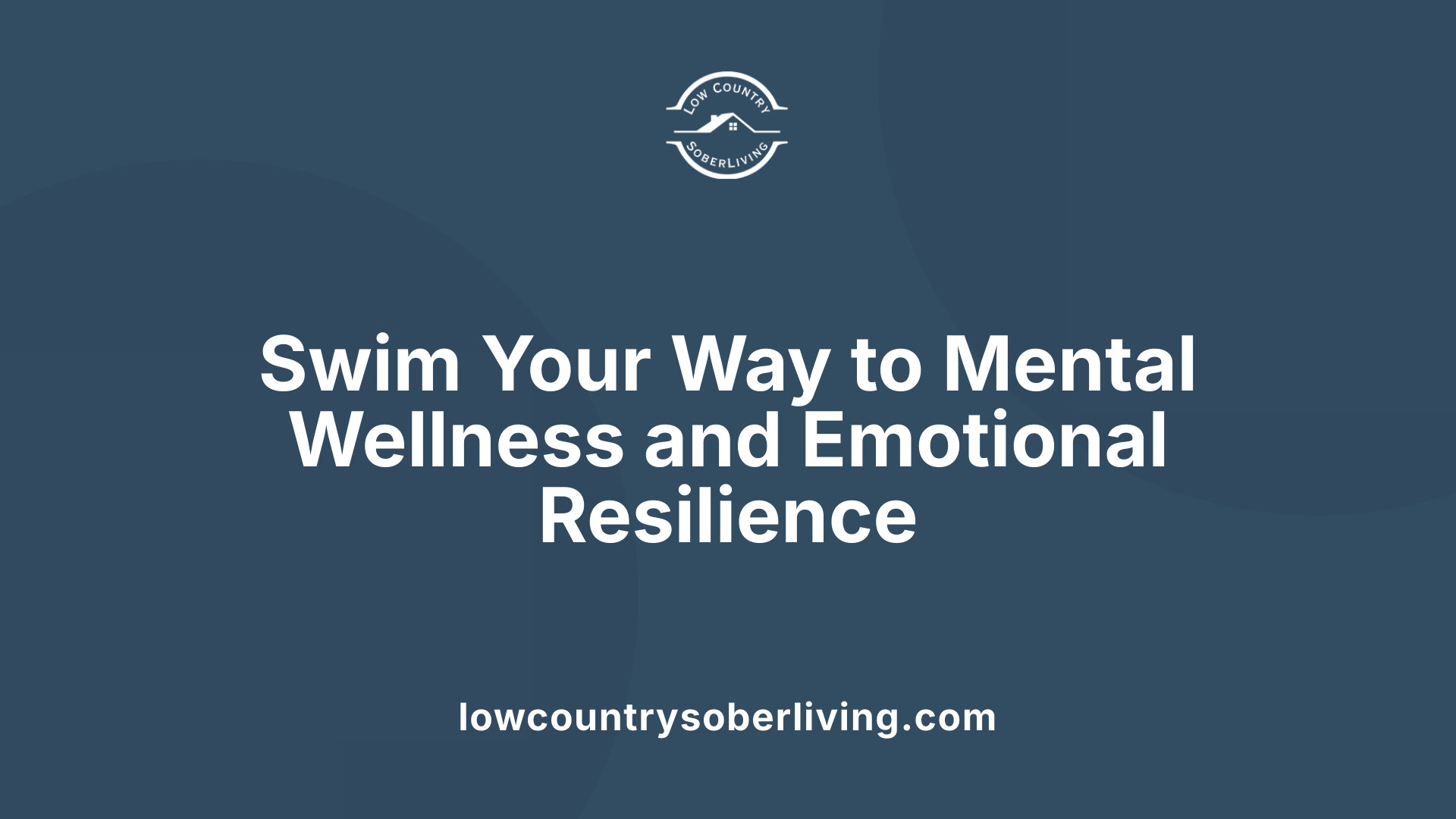
How does swimming promote sobriety and psychological well-being during recovery?
Swimming plays a significant role in supporting individuals during their recovery from substance addiction by addressing physical, mental, and emotional health. This aquatic activity helps establish a structured routine, fostering discipline and resilience—traits essential for long-term recovery.
One of the main benefits of swimming is its ability to boost mood and reduce stress. It accomplishes this through the release of mood-enhancing chemicals such as endorphins, serotonin, and brain-derived neurotrophic factor (BDNF). Endorphins are known for their pain-relieving and euphoric effects, which help lessen symptoms of depression and anxiety prevalent during withdrawal. Meanwhile, serotonin and BDNF contribute to improved mood regulation and brain health, aiding emotional stability.
Furthermore, swimming supports physical recovery by improving cardiovascular and respiratory health, which is crucial for rebuilding overall physical strength and stamina. The activity also helps repair damage caused by addiction and promotes better sleep patterns—both vital for mental well-being.
Another vital aspect is the boost in self-confidence and body image that comes with mastering swimming skills and achieving personal goals. This enhances self-esteem and fosters a positive body image, which can be fragile during recovery.
Swimming’s low-impact nature makes it accessible for people with physical limitations or injuries, encouraging ongoing participation. Its meditative qualities—arising from focused attention, rhythmic movements, and the soothing properties of water—induce flow states that increase happiness and mindfulness.
Additionally, participating in swimming programs often involves social interaction and community support, which are powerful tools in reducing feelings of isolation. These social bonds can motivate individuals, provide encouragement, and reinforce commitment to a sober lifestyle.
Altogether, swimming offers a holistic approach to recovery by improving physical health, elevating mood, fostering resilience, and cultivating mindfulness. This combination helps individuals strengthen their mental health, sustain sobriety, and develop a positive outlook, supporting them on their journey towards lasting well-being.
Embracing the Water for Lasting Recovery
Incorporating swimming into addiction recovery programs offers a comprehensive approach to healing that addresses physical, mental, emotional, and social aspects. Its ability to promote physical health, foster mental resilience, improve emotional stability, and build social connections makes it a potent therapeutic activity. Moreover, water-based exercise encourages mindfulness, routine, and discipline, which are vital for sustaining sobriety and long-term well-being. As part of a holistic recovery strategy, swimming can transform challenges into opportunities for growth, supporting individuals on their journey toward renewed health and happiness.
References
- Find Out How Swimming Boosts Addiction Recovery - Alliance MD
- Why Swimming Is Beneficial During Addiction Recovery?
- Why Swimming is Beneficial During Addiction Recovery
- The Benefits of Swimming in Drug and Alcohol Rehab - Townsend
- Swimming exercise attenuates psychological dependence and ...
- The Benefits of Swimming for Addiction Recovery - Elev8 centers
- How Swimming Can Help You Stay Sober - Recovery Ways

